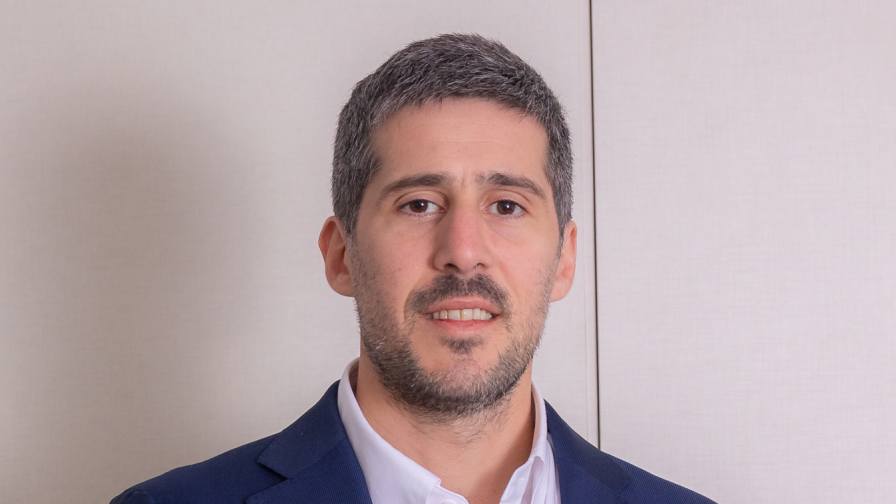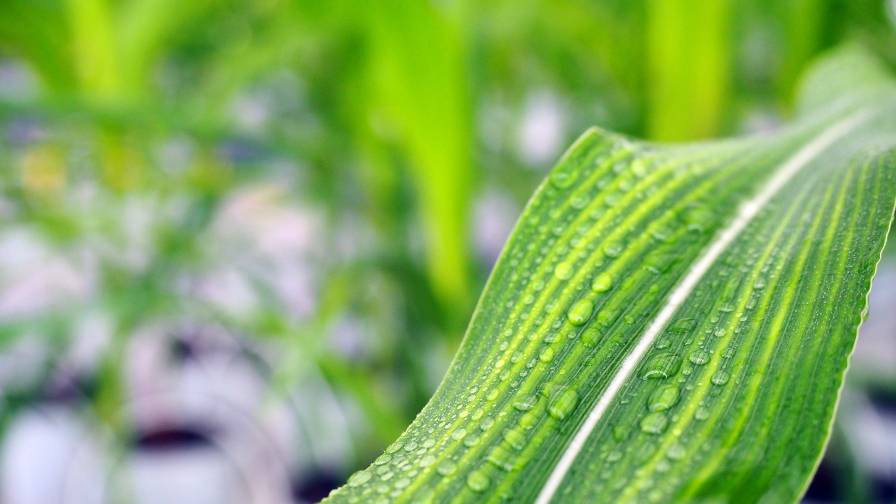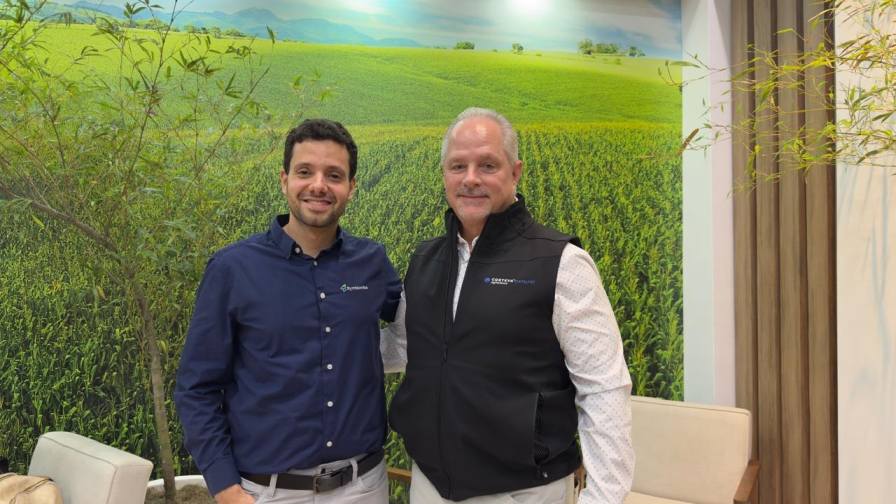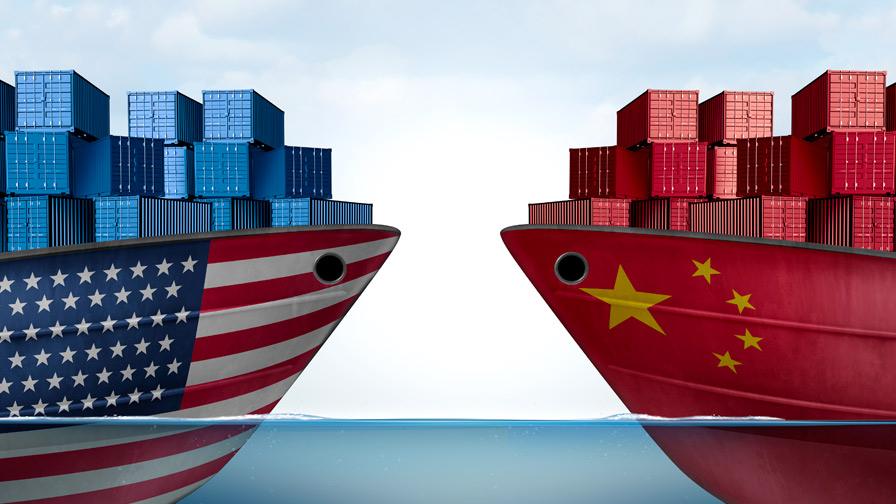Ag Tech Talk Podcast: Agmatix CEO Ron Baruchi on How Harnessing the Power of Data Modeling Will Transform the Future of Crop Inputs

Working with NASA this agro informatics company has developed data-driven solutions for the industry across the supply chain. Their technology platform uses data science and advanced AI technology to convert agronomic data into actionable insights at field level.
Podcast Transcript:
Agmatix, is a Tel-Aviv, Israel-based start-up AgTech business specializing in turning large amounts of agronomic data into powerful models and insights that will transform the entire value chain, including the way crop inputs are manufactured, distributed and applied. The company recently partnered with NASA Harvest, NASA’s Global Food Security and Agriculture Consortium. Yes the organization that sends astronauts into space also focuses on food security around the world.
In this podcast we speak with Agmatix CEO Ron Baruchi about how this the partnership with NASA Harvest and how the technology the company is developing will transform agriculture in general and crop inputs in particular.
ABG: Okay. Let’s talk a little bit about this. We’ve gone from an industrial society to one driven by data. Data is everywhere in agriculture. What kind of change has this had specifically on this industry?
RB: Yeah, I think I think we’re in the middle of a huge transformation and agriculture is undergoing a massive transformation with the introduction of digital solution at farm level and actually throughout the entire value chain to help growers to increase, use, improve profitability, and improve sustainability.
This is only going to increase as we will harness more digital technologies to fight climate changes ― and actually increase resilience in supply chains ― because we need to ensure stable food supply. And when you look at the impact of this, this actually means that agriculture data is going to grow exponentially year over year. It’s already growing. I’ve seen estimates that by 2036 data points collected daily on the farm would increase by 800%.
Other research shows that 900 terabytes of data is estimated for a single corn season in the U.S. only. And we are also talking on prediction that by 2050, each farm will produce around 4.1 million data points daily. So, we can definitely see the future is coming with the use of those technologies in AI and data is going to be absolutely essential to enable this to happen.
And this is actually going even beyond the regular operational level at the farm level where digital solutions are helping farmers to apply precision agriculture techniques in order to optimize resources and reduce risks. But data driven solutions are going all the way throughout the value chain, and we’re going to see solutions that are going to impact research and development.
Agriculture, research and development have been revolutionized by data driven technologies, advanced data analytics, and AI will help research to analyze the vast datasets to discover innovative solutions for crop improvement disease, resistance, climate resilience and so on. We see a huge impact of using digital and data for sustainability and environmental impact, analyzing data on the resources usage and environmental factors to drive carbon emissions, and in the end, data-driven decision making, right with access to vast amount of agricultural data. Players throughout the ecosystem can make more informed decisions on crop selections, planting times, and harvesting schedules. Players like insurance companies to look at insurance risks data for providing funding. And I think this is this is extremely going to grow in the next couple of years.
Is agriculture going to continue its digital transformation organizations today? I think a recent IDC survey talks about that 75% of the agriculture organizations view digital technology as critical aspect of their operational improvements. So, this is definitely going to increase.
ABG: You mentioned the amount of data that’s coming through. That’s just overwhelming or it could be overwhelming. You talked a little bit about some of this in your answer, but how do you turn that that that wealth of information into usable, actionable data?
RB: I think with this huge promise comes also some complexities. And we look at digital adoption. It’s definitely increasing but still low if you compare it to other sectors. There is a clear difference between geographies in this aspect and the type of technologies we are talking about. In the end, the main limitation for digital adoption at the field level, our lack of clear ROI and connectivity issues. You need the right ecosystem to support the different digital adoption in order to enable those farmers to translate this data into actionable insights in the end.
Recent surveys shows that digital adoption in farming, at least globally, 39% of the farmers are planning to use at least one digital solution in the next two years. In Europe and North America it reaches 60%. But we have other areas that are still at 9%, like in Asia. So even though we see adoption is increasing slowly, slower than we wish, there are still major challenges from the fact that solutions are not interoperable; data is not standardized; data is still siloed. And this actually prevents close collaboration and effective use of all of these data in a way that will really translate this into effective insights and activity.
In many cases, the process of analyzing this information ― it’s too cumbersome, meaning that most of the data is either not collected or goes to waste. And I think the potential here of connecting all of those data points, generating a standardized and interoperable system, is huge in order to drive both adoption on one side, but also drive real change at the field level by translating data into specific insights and actionable directions from the farmers to do.
ABG: Again, I think we’ve talked about this next question a little bit. Where are we in this information age? Are we still just scratching the surface? You said in 10 years, we’ll be collecting so much more data and then using that information. Where are we at solving those problems.
RB: We are on the way to solving these issues. And as we see more and more technologies which are coming in, in other industries, that will also affect agriculture for sure. But process is being slow.
It is still slow in many cases. And we do see technologies which are coming in that will definitely drive this change and companies, because of the different ecosystem and the different requirements that they have, will drive change and will require us actually to go to see more collaboration between different players in more interoperability that will enable us to really see some changes in the technological adoption.
ABG: Okay. Let’s talk about how this plays out on a farm itself. Our listeners are manufacturers of crop inputs. We’ve been hearing about the products they use and what effect it has on the environment. We’ve been hearing a lot about carbon recently, as well. Can you talk about the importance of being able to understand that carbon footprint on the farm and what that actually means?
RB: Sustainability and carbon footprint, which is one of the most important factors in sustainability, will continue to be a strong driver for digital transformation that farm level. The reason is that in order to quantify the carbon footprint in agriculture environments, you need to collect vast amounts of data both ground truth data and also remote sensing models where possible.
And as we see more shifts towards in-setting of carbon, this will go even beyond just the farm level, but will cover transformation to farm gates, shipping, manufacturing and even sourcing of raw materials for those input companies. In all cases, high-quality data collection is a must, and scientific approach is absolutely required to analyze this collected data to ensure that those organizations and the farmers which are supporting them in terms of supply, but also in inputs, are reaching their net zero targets and reports to those results in a meaningful way. So, data-driven solutions, which are based on this data, which is being collected in share throughout the value chain, will be used to generate common metrics and indexes to quantify the adoption of sustainable agriculture practices at farm level, and in the end of day for the farmer will help them to balance between sustainability and profitability in in the right way.
Because it’s a challenge today, and we only see more and more data systems coming in to help with this balance. across.
ABG: On a related note, earlier this year you announced that the company has a partnership with NASA Harvest (National Aeronautics and Space Administration), which is, if I understand it, NASA’s a group that talks about food security and other issues related to agriculture. Can you talk about that relationship that you developed?
RB: Exactly. Your previous question is about this because in the end of the day, in order to understand at farmer level the carbon footprint, you need to collect a large amount of ground with data. But when you look fast forward, it’s not scalable because you need to use remote sensing and remote sensing models in order to reach scale.
And to do this, you need to calibrate those remote sensing models with the data which is coming from the ground in order to build very strong models that are going to be scientifically based and will be validated and calibrated. And that’s exactly the combination and the collaboration we are doing with NASA Harvest, because Agmatix is developing a lot of technologies around the trials, field trials and field data and actually has a lot of ground truth data and very high quality for a lot of locations and more than 150 crops.
The idea is that can we use these data in order to calibrate some of those remote sensing models, which are coming from satellites and enable the data to be used in order to develop models, to predict or to assist the carbon footprints and to generate a resilient supply chain from a sustainability point of view. So, the collaboration is between Agmatix and NASA Harvest in using ground truth data from field trials and experimentation and agronomy from our different territories to calibrate and build those remote sensing models.
ABG: Related to all that carbon footprints and everything. As I mentioned, our listeners are the manufacturers and distributors of crop inputs. What kind of effect do you think having this information, this data, these solutions ― the type of solutions you’re developing will have on crop inputs themselves?
RB: Data collection is the base of the iceberg. Modeling and predictions are the tip of it. For example, simulating crop environments in digital twins or using synthetic data to predict crop yields following an increase in ag practices or changes or different environmental conditions, this is what will impact at the end of the day, those the farmers and the input providers landscape is evolving towards a greater vertical integration ― transitioning from traditional input-based business models to either a service-oriented input model or with an integrated approach talking on the overall plant and soil health, than just as a single factor. And because of this, this understanding of the model and the predictions and those digital twins are absolutely critical for crop inputs in order to rely on this data and help them to develop better products and better service to the farmers. These new models rely heavily on the data that in order to comprehend the unique requirements of individual customers, based on factors that like crop type location, soil, weather conditions, and by adopting this prescription approach, those providers, the input companies can offer, as I said, better and more optimized inputs and really allow them to, with their integrated solutions to improve yields while minimizing environmental footprint. This holistic approach would ensure a more sustainable, impactful agriculture practices in the future.
ABG: Is anybody doing that right now? Are they doing this modeling right now or is it still in its infancy and we’re still learning about it?
RB: It’s being done throughout the different players in different shape or form, but I think it’s going to be only increased in the future because of the data standardization and interoperability, because today the ability to do this is quite narrow in specific domain or a specific environment. But once you connect everything together, the potential is much bigger than is being done today, and the adoption will be much wider because the cost is going to go down. It’s going to be part of doing your regular business and we will see increases in farmer adoption of those solutions that comes together with either a physical product or over more digital service. And that’s probably going to be the future of sustainable agriculture practices.
ABG: Very good. Thank you. What else do we need to know? What haven’t I asked you about?
RB: I think it will be interesting to talk on where this technology is heading in the next five to 10 years. I think the AI revolution is going to drive everything that we do, and we are going to see more and more usage of generative AI and deep learning technologies that are also going to be leveraged in agriculture.
has a potential to automate 70% of the work done and allow plants to grow with less, to grow more with less and become much more resilient. So, I think this is true for farmers, but also true for organizations in the value chain. I think the potential value of AI can deliver here is extremely high on the function by function specific and use case.
It could drive value across the entire organization, leveraging internal knowledge management systems to drive smarter discoveries and faster time to market. And in the end, to facilitate this capabilities of AI, you really need this base data collection, data sharing, and data interoperability and that we at Agmatix are focusing a lot of our efforts in because we believe this will this will drive efficiency and effectiveness of those models will lower digital costs and reduce data waste, which are absolutely essential for those AI and machine learning technologies.
Another thing which I think is going to happen much more is the usage of open data platforms that will support cross-industry collaboration. It’s just that the challenges we are trying to solve are too big for a single player to solve by itself. And in in order to do this field data and high-quality data will need to be shared between researchers and agronomists and between different organizations.
And I actually think that in agriculture, open data and open code is going to revolutionize the industry exactly as it has done so for other industrie,s which are using it. And as we see more and more shift towards integrated soil and plant health solutions, you really need to have all of this data available, interoperable, and shareable between different partners in the ecosystem in order to generate an impact.
ABG: Very good. Well, thank you very much for your time. I really appreciate it. I learned a lot. I look forward to talking with you again sometime.
RB: Sure. My pleasure. Thank you so much.








